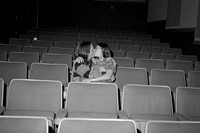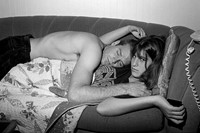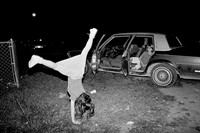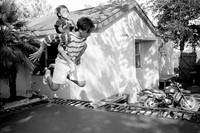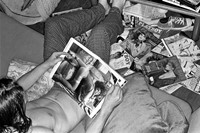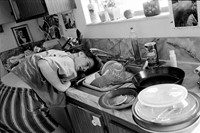For Peggy Nolan, the gift of a Nikon camera at 40 resulted in a breathtaking body of work, encapsulating her children’s coming of age in South Florida
A teenage girl rinses her hair in the kitchen sink, a pile of dirty dishes heaped beside her; another reclines on a sofa, issuing the viewer with an intense stare, as her boyfriend dozes on top of her. Young party-goers frantically mosh and tussle on a crowded dancefloor while, in a skate park, a group of boys wanders obliviously as a biker flies through the air behind them, legs akimbo as he prepares to return to the ramp – or, perhaps, crash to the ground below.
To flick through the pages of Juggling is Easy, the newly reprinted photobook by Florida-based photographer Peggy Nolan is to relive all of the lounging and longing, the frolicking and fearlessness of childhood and teendom, encapsulated in beautifully shot photographs that are also raw, frenetic and intimate. Nolan is a mother to seven of the children pictured – four boys and three girls – and the works that fill this book are a tight curation of thousands upon thousands of black-and-white photographs she took as she was raising them in a suburban neighbourhood near Miami, from the early 1980s onwards.
Having studied creative writing at Syracuse University (alongside Lou Reed), Nolan’s early dreams of becoming a writer dissolved when she married young and turned her hand to raising her children. But, at the age of 40, her father gifted her a Nikon camera, and her passion for documenting the world around her took on a new form. In her late 40s, she enrolled at Florida International University, where over the next few decades, she would manage the darkroom, receive her Bachelors and Masters degrees in photography, teach students of her own, and present her first solo show, sharing many of these photographs for the first time.
Now 79 and living alone, Nolan is enjoying long-overdue acclaim, with various exhibitions and projects in the pipeline. Here, she tells AnOther about the wild juggling act of raising her children while honing her craft.
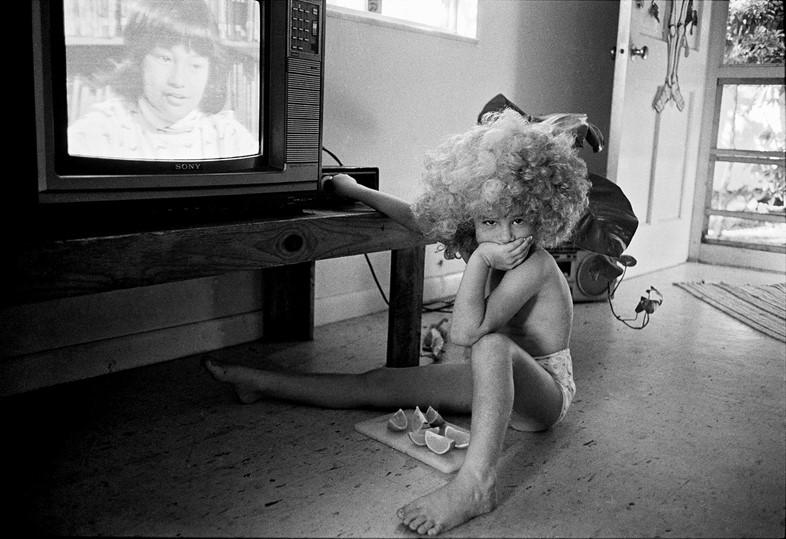
“My father gave me a camera because he wanted pictures of his grandchildren, but when I looked through the viewfinder, I got hooked. It was an obsession: capturing what it looked and felt like to be in my family. I didn’t think about myself as a photographer or artist for many years, I didn’t think about the finished product or getting attention – this was a private family pleasure.
“I was married for 25 years and got divorced when my youngest daughter was seven or eight. I sat my daughters down then and said, ‘From this moment on, your bodies are your responsibility. If you want to dye your hair blue or walk around naked, you’re going to have to face the consequences’.
“I was a little bit worried about it, but it all worked out! So that’s my laissez-faire parenting style; it’s a little bit loose. If you consult some of my kids, they’ll probably tell you one or two things they’re pissed off about. My eldest son wrote for some essay I wasn’t supposed to read: ‘My mother is too cool. Sometimes it’s embarrassing.’
“These photographs are mostly not posed: I just butted into my kids’ personal business and, a lot of times, they weren’t that happy about it. I went to three or four Lollapalooza concerts with my camera when they were there – I busted into things not to supervise them but to take pictures. But I promised them they’d appreciate it eventually, and now they do.
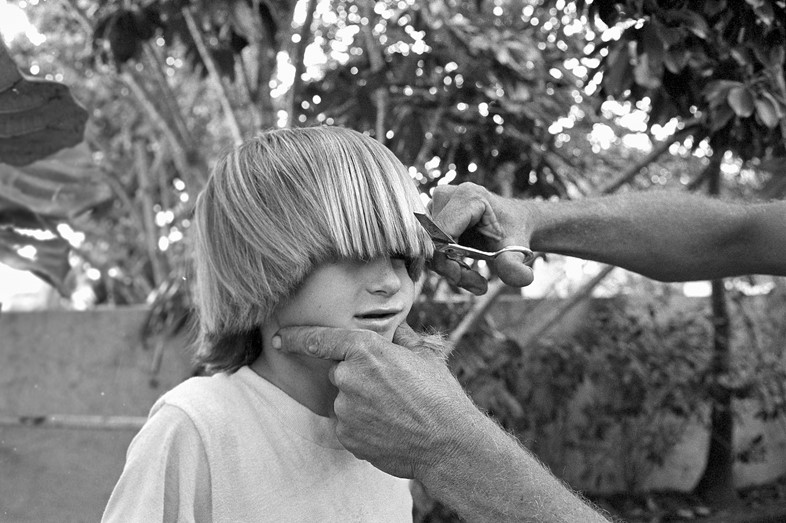
“The reason I like to photograph kids is that they don’t hold back. Grown-ups don’t touch each other as much, they don’t sit with their legs open on a chair, they don’t eat their hair. They get rid of all those habits and become ‘civilised’.
“The most interesting age to photograph was probably when they became sexually interested. It added a tension to life that was really fun to see. I’m very interested in boredom, too. I myself am never bored, but there’s a certain teenage ennui and it makes really interesting pictures.
“My approach to making the pictures was always totally instinctive. There was so much chaos and I relied on my instincts – I still do. The more you can use your senses, the more genuine the finished product will be. I don’t think about the past very much; I live in the moment. The pictures are my work now, and they’re very different to the actual lives of my children. When I was making the pictures, when I look at them now, I think of my children as objects. I don’t have a sentimental attachment to them in the work, it’s more of an aesthetic attachment. That sounds a bit cold but ultimately, if you’re going to make a piece of art, you have to distance yourself from what’s in the picture – it’s about that, of course, but the whole picture, with all its components, has to be considered for it to really work.”
Juggling is Easy by Peggy Nolan in published by TBW Books, and is out now.

